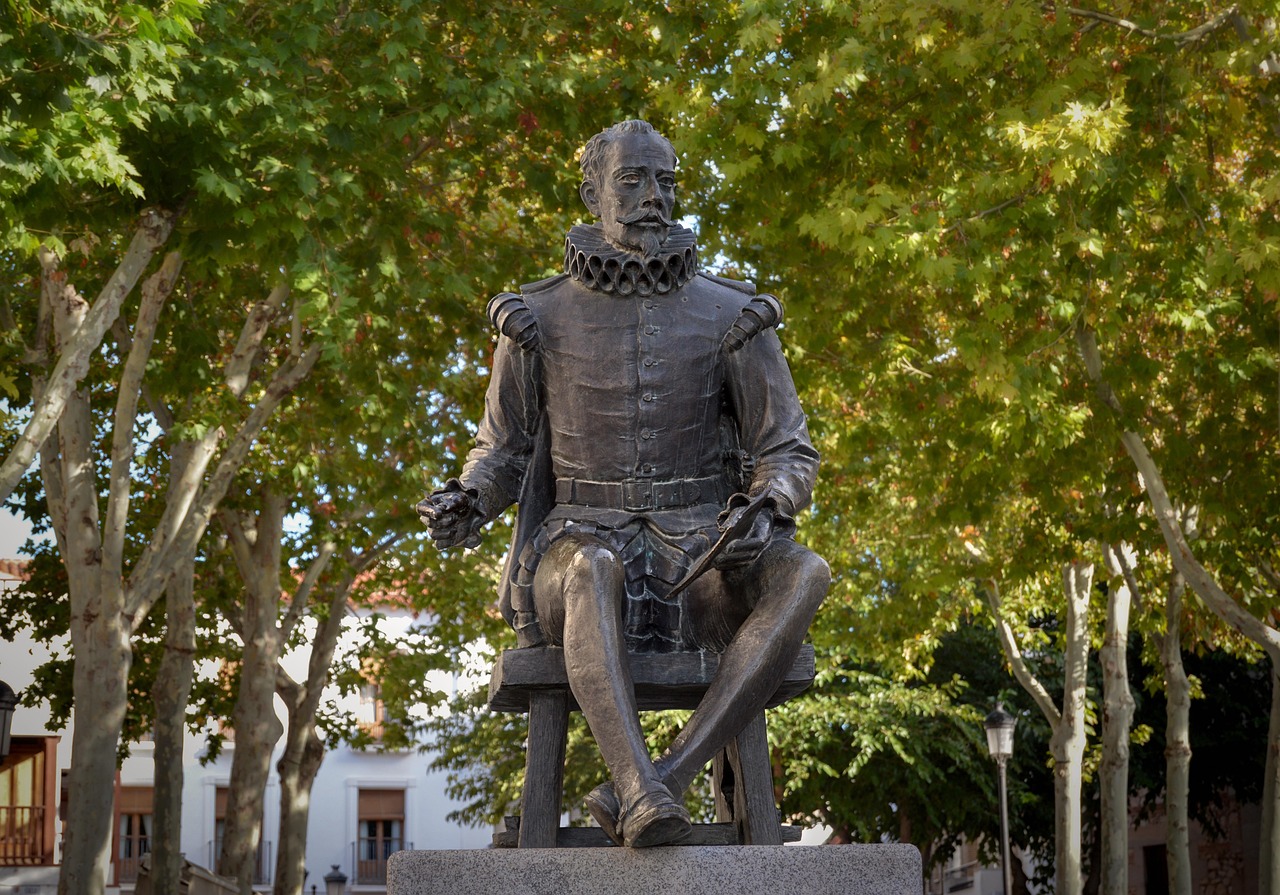The literature of Miguel de Cervantes and his legacy

Pixabay
The author Miguel de Cervantes, through parody based on the novels of chivalry, established a dialogue between the specification of the real and the ideal, which emerges from the interaction between Don Quixote and Sancho Panza. This work also represents a revolution in the way we tell stories and will make us question madness, freedom, and identity, topics that survive to this day.
Besides "Don Quixote," Cervantes was interested in various literary genres, such as poetry, theater, and the "Novelas ejemplares" (1613), a collection of tendentious stories that combined entertainment with moral teachings. In stories such as "Rinconete y Cortadillo" and "El licenciado Vidriera," the author used irony to exploit the contradictions of Hispanic society during the Golden Age, drawing on the dialogue between realism and satire.
Although his plays are not as well-known as those of Lope de Vega, the latter also presents innovations compared to the original, combining humor and a critical sense, as is the case with "Los tratos de Argel," written based on his experience of captivity in Algiers. Such diversity attests to his versatility and also to his willingness to experiment with the limits of language and the human condition.
Cervantes' legacy is prodigious: he laid the foundations for the novel as the new dominant genre of Western literature. Authors such as Dostoevsky, Flaubert, and Faulkner declared themselves indebted to Cervantes, admiring his ability to bring out characters as complex as they are universal. Furthermore, his influence extends to philosophy, art, and even psychology, where authors such as Freud have analyzed the symbols of his work.
In the cultural and heritage sphere, Don Quixote represents a banner of struggle for ideals at all costs, an expression of both human dignity and the senselessness of existence. The knight of the sad figure ultimately symbolizes the human being and its contradictions.
Cervantes is a benchmark in Hispanic and world literature. His work not only enriched the Spanish language (sometimes called the language of Cervantes), but also fostered artistic variations on the big screen, in theater, in music, in comics, and elsewhere. Institutions like the Instituto Cervantes do much to honor the figure of the creator and his legacy beyond their academic role as a cultural ambassador. Cervantes's narrative invites us to reflect on eternal themes: justice, dreams, the hopes we must cling to.
With his sharp and compassionate gaze, Cervantes reminds us that, in the face of a world full of contradictions, literature is and will always be a way of understanding the human condition.